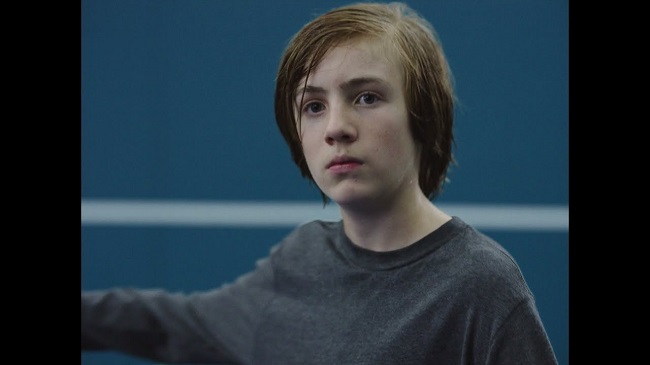What happens when one becomes an adult — or more accurately, what change demarcates childhood from adulthood? This is the central question in the 2021 psychological thriller John and the Hole. However, the film is not interested in, or perhaps is not capable of, offering a satisfying answer. John and the Hole is a quietly disturbing experience that teases apart the audiences’ own expectations and prejudices.
The film is intellectually challenging, and fans of arthouse films will find plenty of inspired visuals and nuanced, layered storytelling to keep them engaged. For most viewers, however, John and the Hole is simply a slow-burn thriller with an unconventional coming-of-age story that many will find unrelatable.

Directed by Pascual Sisto
Directed by Pascual Sisto and written by Nicolás Giacobone, John and the Hole is a 21st-century fable centered on 13-year-old John (Charlie Shotwell). John is the kind of inquisitive — if slightly off-putting — adolescent who is preoccupied with his own thoughts. After discovering a partially complete bunker in the woods, the young man drugs his mother Anna (Jennifer Ehle), father Brad (Michael C. Hall) and sister Laurie (Taissa Farmiga), then drags their bodies into the cement pit (the titular hole). The family awakes to find themselves trapped.
Motivation
John’s motivation in John and the Hole is never clear, which drives the film’s suspense. There are hints early on that something isn’t quite right with the young lad, but there’s no inner monologue or conversations with a confidante to explain how John is actually feeling at any given time.
The camera does a lot of the work in establishing mood and tone, hinting at John’s state of mind. The family is as bewildered by the predicament as the audience — at first, they aren’t even angry, they just want out. As time goes on, and they find themselves in an increasingly desperate situation, this changes somewhat; still, most of the movie’s focus is on John experiencing true independence for the first time in his life.
Risky Business
Much of John and the Hole plays out like a humorless blend of Home Alone and Risky Business. John’s family is affluent, and the young man has ready access to his parents’ cash. He mainly uses these funds to buy junk food, although he does give money to a friend and buys himself a TV.
Other than the incredibly extreme choice to trap his family in a confined space, most of what happens in the film is basically what one would expect from a quiet 13-year-old boy: he invites over a friend he knows from online, he skips school and he makes a mess of the house.
The movie’s psychological thrills are the sense of unease because the boy’s behavior is hard to predict. However, this means the movie peaks in the first act when he drugs his parents. There’s not enough momentum to keep the story going, and it begins to unravel part-way through.
John and the Hole has Large Aspirations as a Film but Collapses Under its Own Weight.
The themes of growing up and discovering one’s identity are both underdeveloped and painfully hamfisted. There’s a story-within-a-story device that mainly serves to enforce the idea that John’s story is a fable — but practically speaking, these scenes only interrupt the movie’s momentum and generally detract from the story. The exchanges between the mother Gloria (Georgia Lyman) and her daughter Lily (Samantha LeBretton) are strangely paced and stilted. The wooden dialogue and complete lack of context work against these scenes; one gets the sense that there’s a highly symbolic meaning to having this bizarre framing device, but it just fails on several levels.
Ultimately, John and the Hole is an interesting film that encourages contemplation. Those looking to be thrilled or disturbed will likely be disappointed; yet, audiences who appreciate a strong aesthetic, or simply want to see Michael C. Hall covered in mud, will find John and the Hole satisfying.












